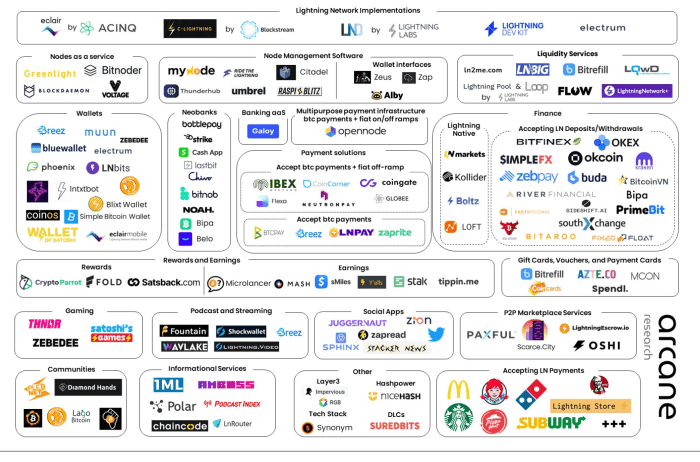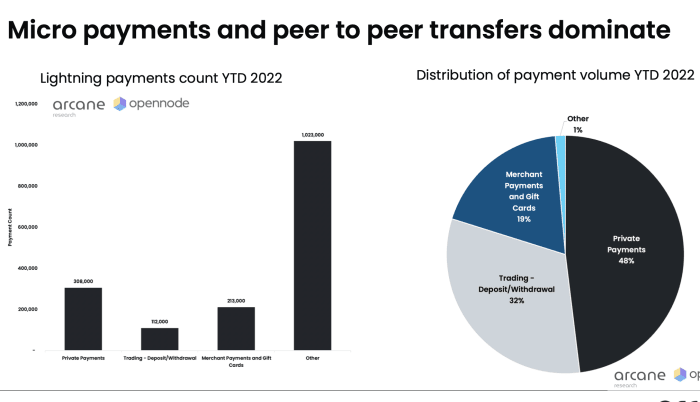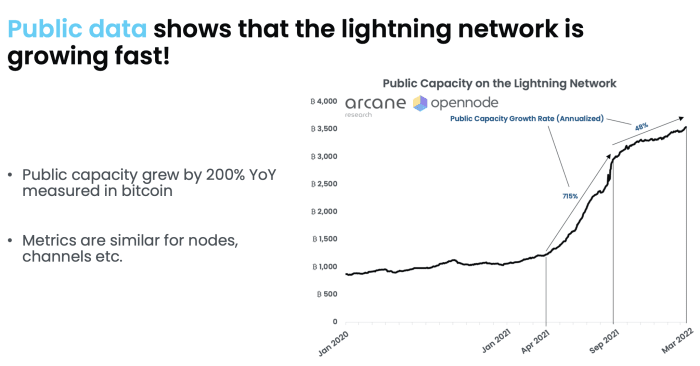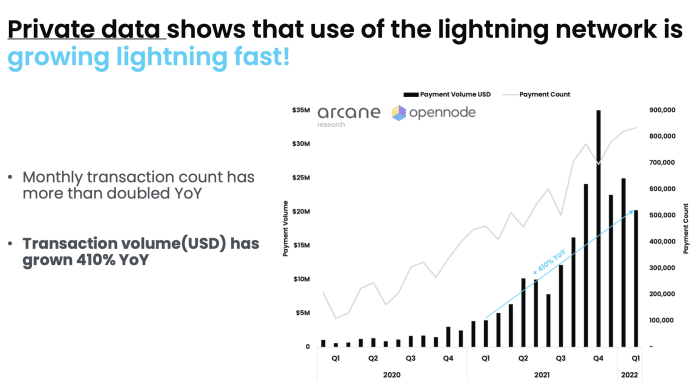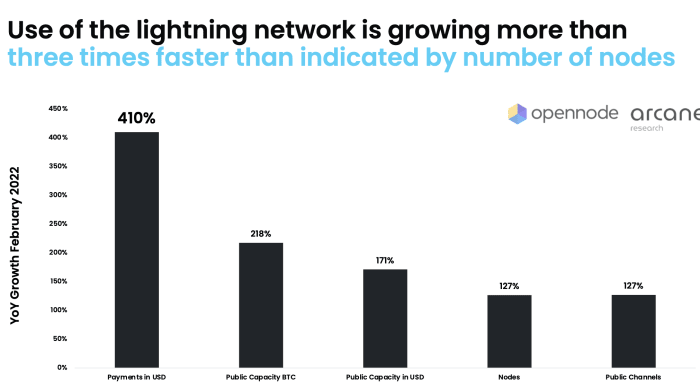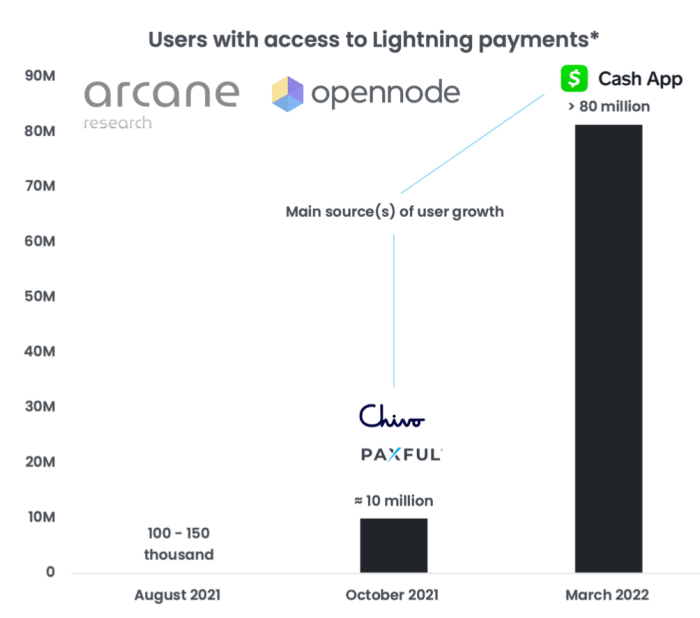- In collaboration with bitcoin-Lightning payment processing company Opennode, Arcane crypto published “The State of Lightning: Bitcoin As A Payment Network” for its second volume in Lightning Network research.
- Lightning has experienced exponential growth with companies like Cash App and the nation-state of El Salvador on-boarding millions of users in a short time. Services arising from this level of adoption drive channel and capacity growth, leaving plateaus in their wake.
- While nodes continue to increase as new users join the network, the more interesting statistics lie in the crevices of transaction volume and quantity.
Arcane, a leading cryptocurrency market analysis firm, partnered with Opennode, a Lightning Network payment processor, and recently published “The State of Lightning: Bitcoin As A Payment Network.” This is the second volume of data released detailing adoption of Bitcoin’s layer two Lightning Network powered by Opennode. Bitcoin Magazine’s previous coverage can be found here.
Arcane notates the divergence of the U.S dollar from a traditional characteristic of value, scarcity. The graph below hints towards a cautionary tale for the future of the U.S Dollar as rapid printing of the currency has unapologetically increased in supply. Bitcoin however, is reaching its programmatic inflation curve and aligns perfectly to the ideas of a digital form of gold.
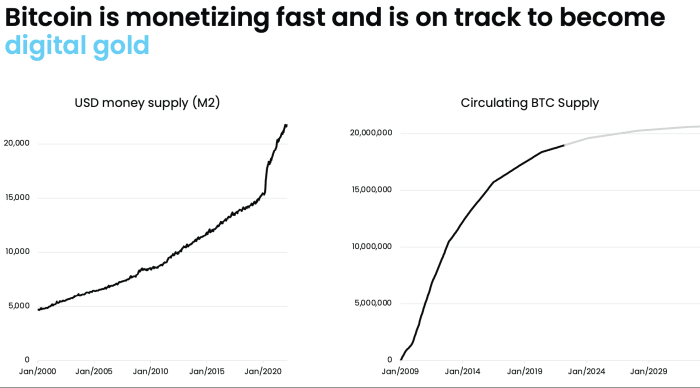
Image Source: Arcane. The drastic increase of M2 supply (physical and digital representation of money supply) depicts an absence of scarcity, separating the USD from characteristics of gold.
Arcane notes that in order for Bitcoin to succeed, it needs to achieve both liquidity and scale. Arcane draws a parallel between email and money. Email was able to revolutionize a communications network over the internet and Bitcoin has the potential to revolutionize payments transactions across the same network.
Email served as a point of distribution and would push out to email service providers such as Gmail, Outlook, or Yahoo. Email was the communication protocol while the other companies served as intermediary service providers.
Similarly, Bitcoin can be thought of as a point of distribution for money. Service providers can then tap into the protocol and create their own companies such as: CashApp, Bitfinex, Paxful, OkCoin, Kraken and Twitter – all of whom have integrated Lightning – to act as intermediaries that transfer the value of bitcoin.
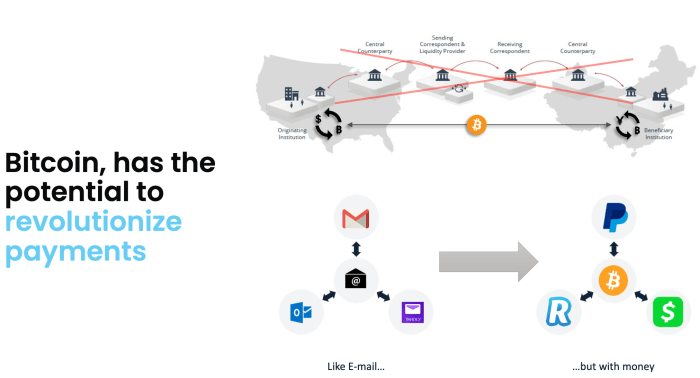
Source: Arcane. Bitcoin as the foundational layer of money removes the intermediaries of the legacy finance world and creates a more distributed and direct relationship with transferring value across space and time.
This revolutionary monetary system becomes more evident when one considers the level of adoption already experienced by Lightning, considering the idea was published in 2015.
Lightning payments have evolved over time for a multitude of uses and year-to-date transaction data shows that 48% are private payments, 32% are deposits and withdraws, 19% are merchant payments and gift cards, and 1% of “other” are smaller transactions.
The fascinating part of the “other” 1% of payment volume is that even though it made up a small portion of the total value on the network, those transactions accounted for over half of the total transactions. The transactions are typically micro-rewards from services like online-gaming that pay users in satoshis.
Public capacity, the amount of BTC held on Lightning channels, saw a 200% year-over-year (YoY) increase. Between April and September 2021, an exponential annualized growth rate of 715% was observed. An expected curve in adoption rates would occur causing a plateau, which is what we’ve been seeing as 2022 has progressed.
The leaps in adoption from last year can be attributed to El Salvador adopting bitcoin by leveraging the Lightning Network, creating a drastic and immediate need for a large amount of Lightning channel. Twitter adopting bitcoin-tipping can also be attributed to large growth in the Lightning Network as well. Large scale adoptions like these don’t come around everyday, so some curve is expected.
As the channel capacity has risen, so too has transaction volume followed. Monthly transaction count has doubled YoY, and transaction volume has witnessed a 410% increase YoY. The graph below gives a more detailed view of transaction volume and quantity dating back to 2020.
Lightning Network growth is evident when one observes the amount of nodes joining the network. However, this growth is not accurately represented by the number of users joining the network as those who have been utilizing the protocol already are turning to it more and more. As of February 2022, the YoY stats saw increases in payments in USD by 410%, public capacity in BTC by 218%, public capacity in USD by 171%, as well as new nodes and channels by 127%.
As the Bitcoin ecosystem continues to grow more companies are expected to integrate the Lightning Network as a means of transferring value. With each intermediary that looks to be part of this emerging system, new nodes and channels will add to the public capacity of the Lightning Network over time.
Arcane cautioned against the use of public metrics to determine growth rates of the network because it does not account for private channels, invisible nodes and has no discernment towards actual usage of the network.
As represented below, Cash App on-boarded many into the ecosystem without the users even knowing they were on the Lightning Network.
As the Lightning Network experiences a short-term plateau of growth through 2022, many companies are likely considering how to be the next to implement it onto their platform.
As Strike CEO Jack Mallers explained during his keynote at Bitcoin Conference 2022, hyper-bitcoinization is not required for the Lightning Network to experience exponential growth. As services begin to realize the superior payment rails Lightning provides, users won’t even need to transact in bitcoin to utilize Lightning. As bullish as this report is, we are left to wonder how bullish next year’s report will be.



